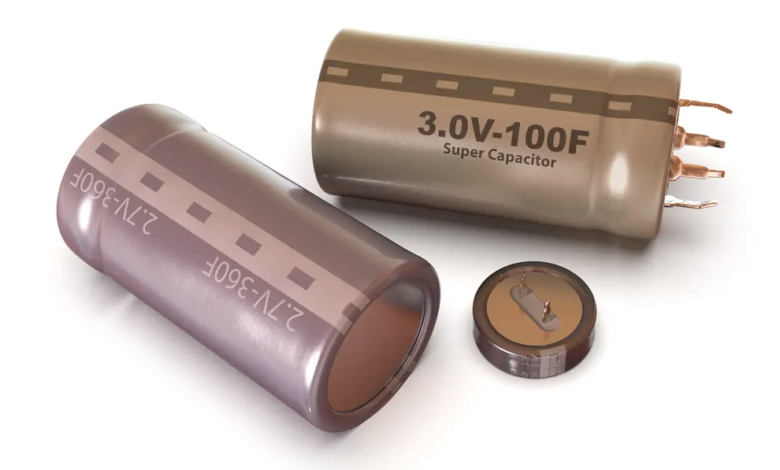Here comes the supercapacitors with a record storage capacity
Milestone reached in storage capacity
(sustainabilityenvironment.com) – 638 Farad per gram. This is the level of specific capacity achieved by the new material for supercapacitors, the result of joint research Greece-Poland-Texas. The large group of scientists, led by Luis Echegoyen of the University of Texas at El Paso, and Marta Plonska-Brzezinskaof the Medical University of Bialystok, has found a way to raise the accumulation capacity of these devices to record levels by structuring a material with unique physico-chemical properties.
Supercapacitors, what are they?
Supercapacitors or supercapacitors are devices that store electrostatic energy using charged surfaces rather than chemical reactions as is the case with conventional batteries. They consist of two electrical conductors (armatures) separated by an insulating layer (dielectric film). Operation is simple: when applying an electrical voltage to the armatures, the charges separate – the positive ones are attracted towards the negative electrode and the negative ones towards the positive electrode – polarizing the dielectric. This allows them to store energy directly and with a higher speed than the batteries, while ensuring a longer life. In contrast, however, they offer significantly lower storage capacity, which limits the range of potential applications.
Increasing the storage capacity with nano-onions
The new supercapacitors designed by Echegoyen and Plonska-Brzezinska has reached a record high level of specific capacity, using a material with a central carbon “nano-onion” structure. This particular architecture creates a greater number of pores that in turn allow the storage of a higher volume of energy. The result? At 4 A/g, the material shows a capacity of 547 F/g which corresponds to a power density of 1,730 W/kg and an energy density of 43 Wh/kg. In aqueous solutions the record of 638 F/g.
The tests also showed that the storage capacity is maintained at 92% of the initial values after 10,000 discharge cycles. “This is a big step forward and brings us closer to reaching supercapacitors with high energy density, which would radically change the way we store and manage energy,” said Echegoyen. The study was published in the journal Scientific Reports.






